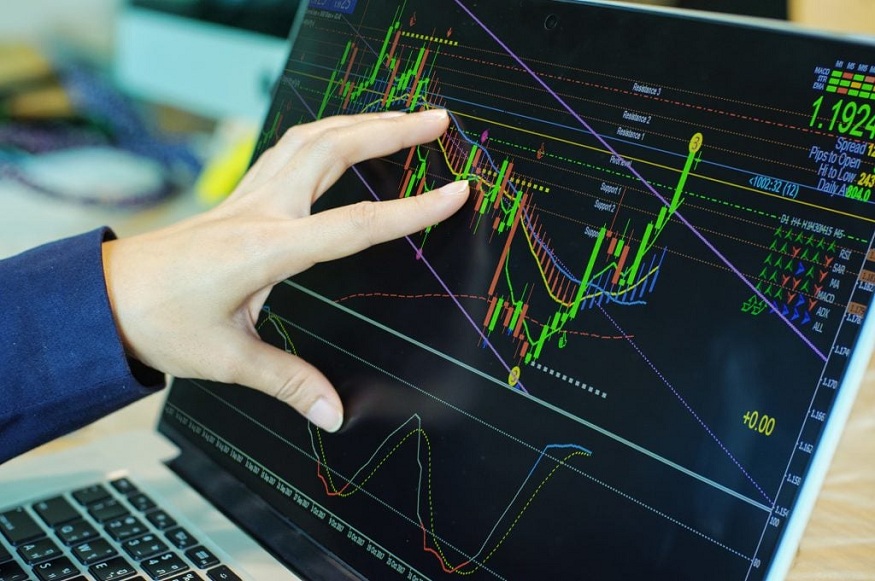Market volatility often carries a reputation for danger, conjuring images of sudden price swings and financial losses. Yet, within this chaos lies an opportunity that skilled traders can harness to generate profit.
While some investors shy away from fluctuating markets, experienced traders view volatility as a tool rather than a threat. By understanding market behaviour, interpreting signals, and applying disciplined strategies, traders can navigate these swings with precision, transforming uncertainty into actionable advantage.
This article explores how volatility can be leveraged as a strategic trading tool.
Understanding Market Volatility
Volatility refers to the degree of variation in an asset’s price over a certain period, and it serves as a crucial measure of market risk and potential opportunity. For traders, understanding volatility meaning provides the foundation for making informed decisions, whether in equities, commodities, or forex.
Volatility is not a uniform phenomenon; it can manifest as sudden intraday swings, prolonged trends, or abrupt reactions to news events. Historical volatility examines past price movements to identify patterns, while implied volatility reflects market expectations of future price fluctuations. Realised volatility measures the actual movement in prices over a specific period.
Together, these concepts enable traders to anticipate potential market behaviour and adjust their strategies accordingly.
Types of Market Volatility
Volatility can take different forms depending on time horizon, market conditions, and external events. Intraday volatility refers to price swings occurring within a single trading session, often influenced by liquidity and short-term news. Long-term volatility encompasses broader trends, shaped by economic cycles, policy changes, and investor sentiment.
Seasonal or cyclical volatility patterns appear in markets with predictable fluctuations, such as commodity markets impacted by harvest periods or energy demand cycles. Event-driven volatility is triggered by specific occurrences like earnings reports, central bank announcements, or geopolitical tensions. Recognising these types helps traders align their strategies with the nature and source of price movement.
Volatility as a Trading Signal
Skilled traders use volatility as a signal to identify trading opportunities rather than simply reacting to market noise. Higher volatility often indicates strong market momentum, providing openings for breakout trad
Conversely, periods of low volatility can suggest consolidation and potential for future price expansion. By interpreting volatility signals, traders can time entries and exits, manage risk more effectively, and optimise their positioning.
Volatility also plays a role in confirming trends; a sharp increase in volatility during an uptrend can reinforce the strength of the movement, whereas sudden spikes during reversals can indicate impending corrections.
Tols and Indicators to Measure Volatility
Traders rely on several analytical tools to measure and interpret volatility. Moving Average envelopes and Bollinger Bands illustrate price ranges around averages, helping to identify expansion and contraction phases.
The Average True Range (ATR) quantifies the degree of price movement over a given period, providing insights into market activity and potential stop-loss placements. Volatility indexes, such as the VIX or VXN, offer a broader market perspective, reflecting investor expectations for future volatility.
In options trading, implied volatility is particularly valuable, as it impacts pricing and the potential profitability of strategies like straddles or strangles. Understanding these tools allows traders to quantify risk and identify high-probability trading opportunities.
Strategies for Trading in Volatile Markets
Volatile markets demand adaptive strategies. Breakout trading seeks to capture strong price movements that occur when an asset breaks through established support or resistance levels.
Mean-reversion strategies capitalise on extreme price deviations, betting that prices will return to their average over time. Options strategies offer a unique way to trade volatility itself, with techniques such as straddles, strangles, and iron condors designed to profit from price swings regardless of direction.
Position sizing and dynamic stops are critical, allowing traders to manage risk effectively while participating in potentially lucrative movements. Each strategy requires careful calibration based on market conditions, asset class, and the trader’s risk tolerance.
Risk Management in Volatile Environments
Even the most promising volatility-based strategies can fail without disciplined risk management. Traders must set stop-losses and take-profit levels thoughtfully, accounting for the amplitude of expected price swings. Volatility can inform leverage decisions, prompting reductions during extreme market swings to prevent outsized losses.
Diversification across instruments or sectors can mitigate exposure to sudden shocks, while ongoing monitoring and adaptation ensure that positions remain aligned with evolving market dynamics.
Risk management is not merely protective; it enhances a trader’s ability to capitalise on volatility with confidence and consistency.
Psychological Considerations
Navigating volatile markets requires more than technical skill; it demands psychological resilience. Traders must maintain emotional discipline during rapid swings, avoiding the temptation to overtrade or make impulsive decisions.
Fear and greed can amplify losses, whereas patience and adherence to a pre-defined strategy can turn volatility into an ally. Developing a mindset that views volatility as an opportunity rather than a threat allows traders to act decisively, balance risk with reward, and sustain performance over time.
Conclusion
Volatility embodies both risk and opportunity, and mastering it is essential for traders seeking to navigate market swings with precision. By understanding the nature and types of volatility, employing analytical tools, adopting disciplined strategies, and maintaining psychological resilience, traders can transform uncertainty into advantage.
The ability to interpret and act on volatility is not innate; it is cultivated through continuous learning, practice, and careful observation of market behaviour. Embracing volatility as a strategic tool empowers traders to thrive even in the most unpredictable financial environments.

